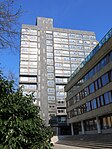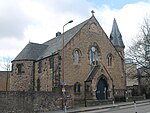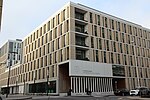Institute for Advanced Studies in the Humanities
The Institute for Advanced Studies in the Humanities (IASH, University of Edinburgh) was founded in 1969 at the University of Edinburgh, for visiting fellows to engage in study and research in the arts, humanities and social sciences. The current Director (since 2017) is Steve Yearley. Other Directors have included David Daiches, Susan Manning and Jo Shaw.Since 1969, IASH has received visits from over 1,300 fellows. Up to 25 Fellows are in residence at any one time, and visits last between two months and ten months. Each year IASH hosts the University of Edinburgh's annual Fulbright-Scotland Visiting Professorship. Notable former Fellows include Marianne Boruch, William C. Dowling, Sébastien Fath, Ruth Barcan Marcus, Edward Mendelson, Garry Wills, and Charles W.J. Withers. IASH hosts or organises over 100 events per year.The IASH Advisory Board includes Sir Michael Atiyah, Rosi Braidotti and Allan Little. It is chaired by Dorothy Miell. IASH's premises are located in Hope Park Square off Meadow Lane in Edinburgh.
Excerpt from the Wikipedia article Institute for Advanced Studies in the Humanities (License: CC BY-SA 3.0, Authors).Institute for Advanced Studies in the Humanities
Buccleuch Place Lane, City of Edinburgh Southside
Geographical coordinates (GPS) Address Nearby Places Show on map
Geographical coordinates (GPS)
| Latitude | Longitude |
|---|---|
| N 55.9422 ° | E -3.186 ° |
Address
University of Edinburgh
Buccleuch Place Lane
EH8 9JT City of Edinburgh, Southside
Scotland, United Kingdom
Open on Google Maps






